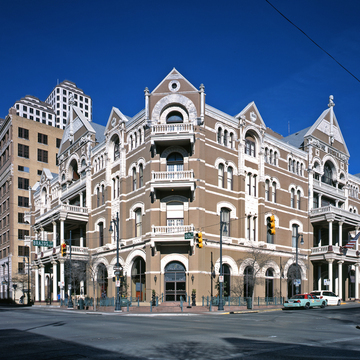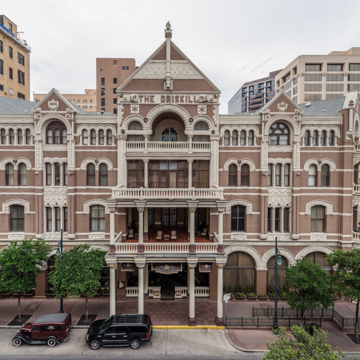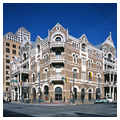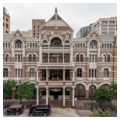The Driskill Hotel and the nearby nine-story Littlefield Building (1901, 1915, Charles H. Page and Brother; 1978 renovation, Holt+Fatter+Scott), at 601 Congress Avenue, dominate the street. Cattle baron Jesse Lincoln Driskill developed the Driskill Hotel as the new capitol was rising several blocks to the north. As Austin's preeminent downtown meeting place, the Driskill has an established place in the state's political history. Lyndon B. Johnson met his future wife, Lady Bird, at the hotel in 1934 and the hotel later served as the headquarters for his reelection campaign as president in the 1960s. The building fell into serious neglect in the late 1960s and was sold as part of a larger redevelopment proposal. In 1970, the Save-the-Driskill organization formed, raising $700,000 to purchase the hotel, which underwent restoration in 1973. Several subsequent owners have updated the building.
The buff brick walls contrast with the creamy limestone stringcourses, arches, balconies, and porches in a visually dazzling display on its two nearly symmetrical street fronts. The lobby has a wide allee of columns with a stained glass ceiling. The Driskill bar is worth a visit with its saddles as barstools, cowhide and horn furniture, and spurs and rifles that complete the cowboy theme.




